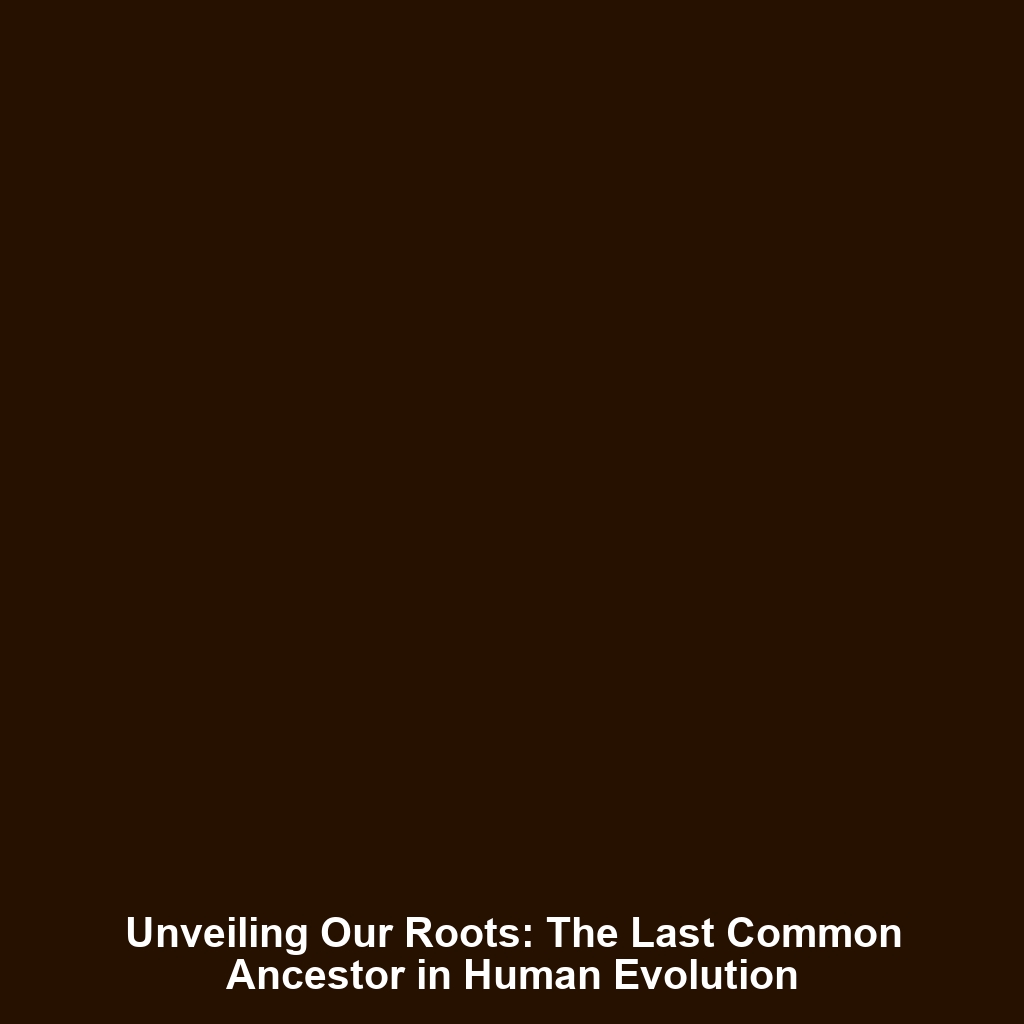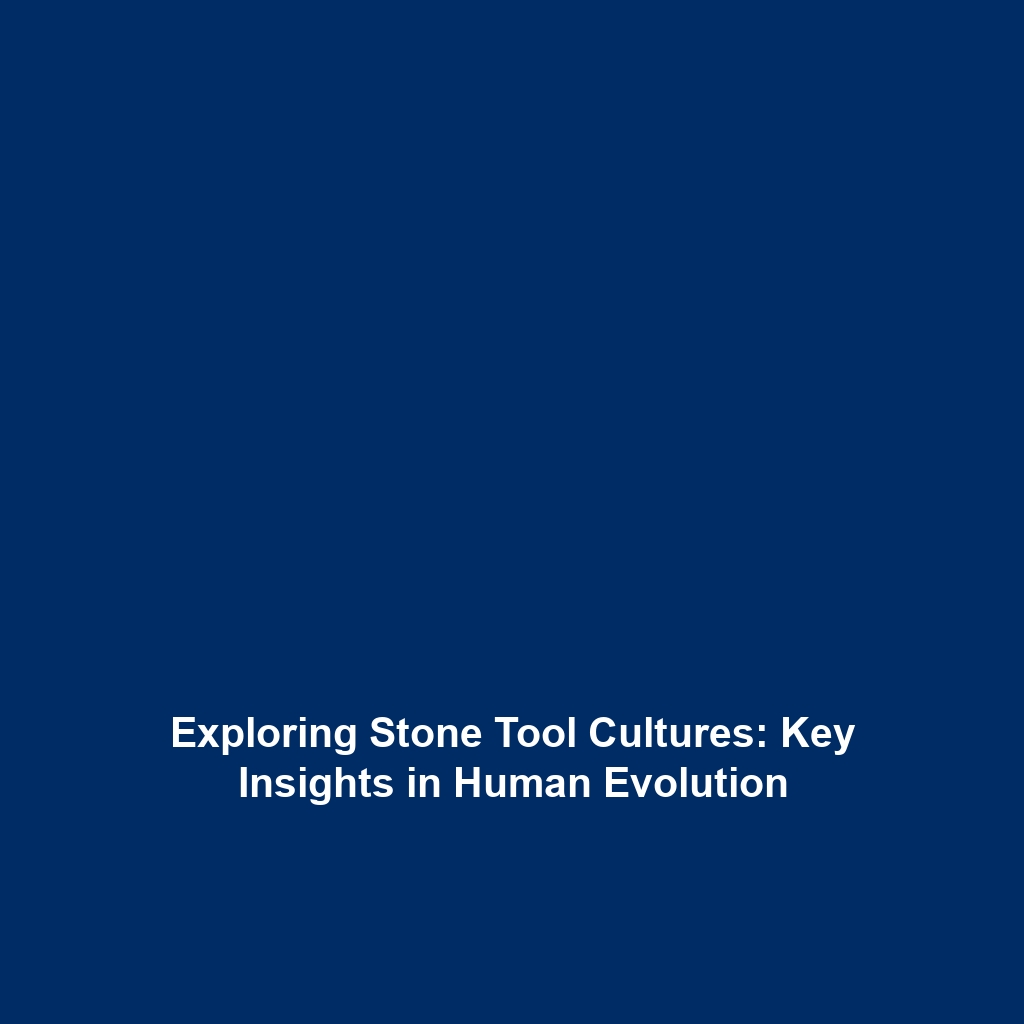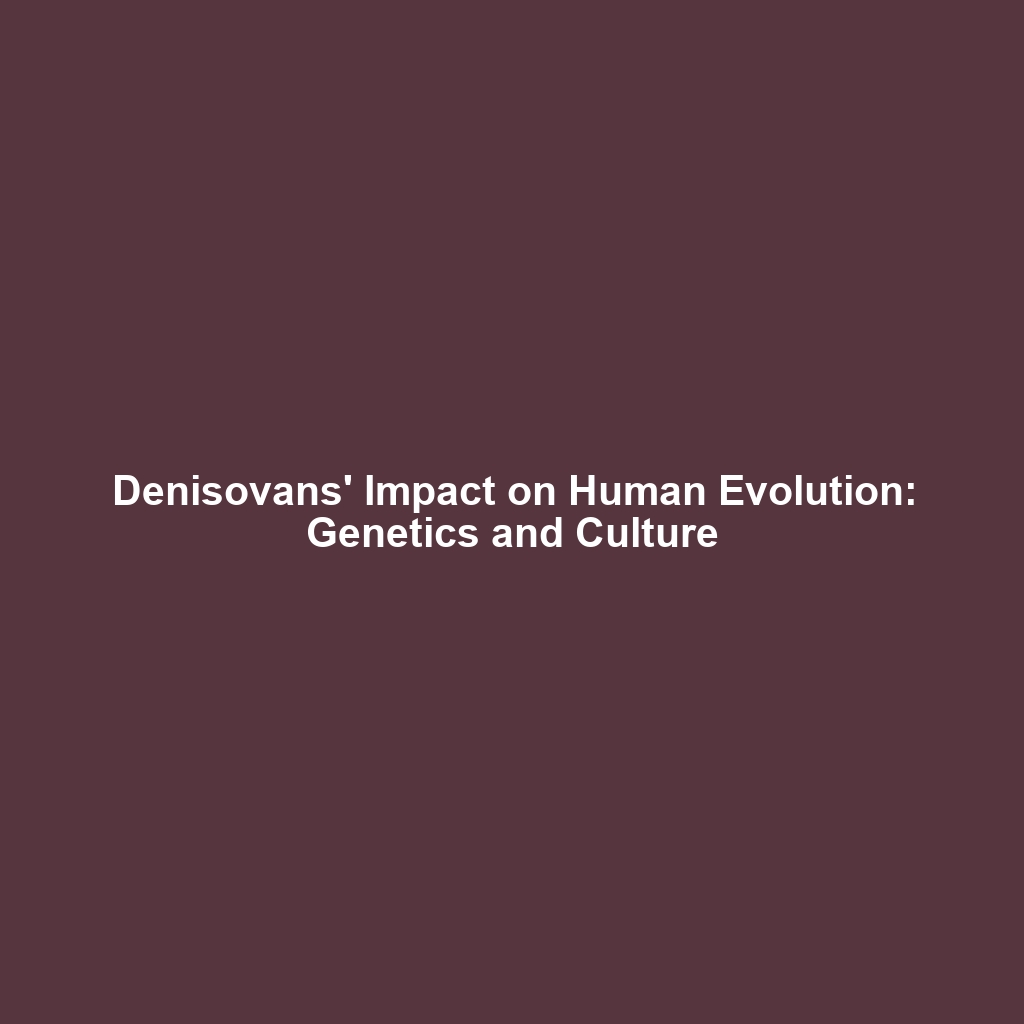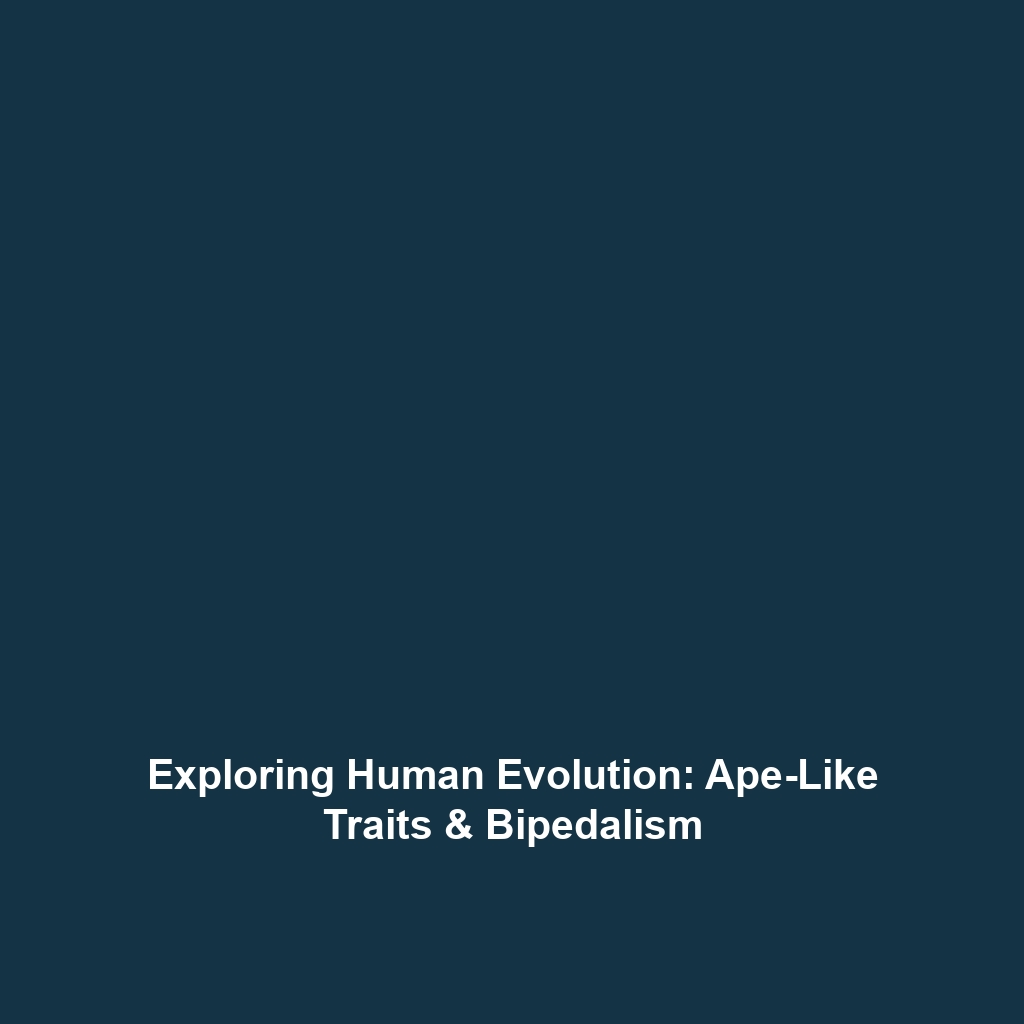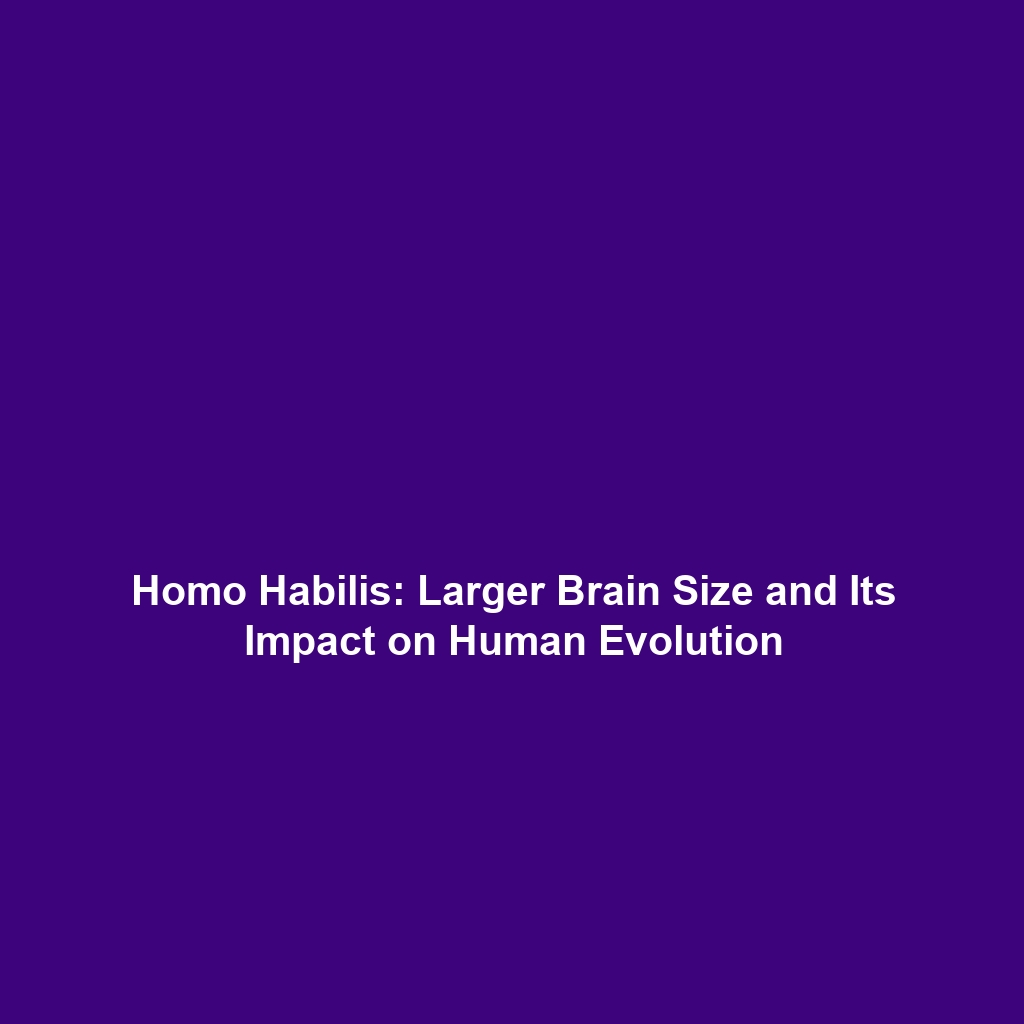<>
The Last Common Ancestor: A Key Element in Human Evolution
The Last Common Ancestor (LCA) represents a pivotal concept in the study of human evolution, marking the point at which modern humans and our closest evolutionary relatives diverged. Understanding the LCA is crucial for piecing together the evolutionary puzzle that defines the trajectory from ancient hominins to present-day Homo sapiens. This article delves into the significance of the LCA within the broader context of human evolution, highlighting its major concepts, applications, challenges, and future research pathways.
Key Concepts of The Last Common Ancestor
The concept of the Last Common Ancestor encompasses several core principles in human evolution:
- Phylogenetics: The study of evolutionary relationships among species is foundational to understanding the LCA. It reveals how different lineages branched off over millions of years.
- Molecular Evidence: Genetic data has significantly advanced our comprehension of the LCA, providing insights into the genetic similarities shared among species.
- Temporal Framework: Identifying when the LCA existed helps establish timelines for species emergence and divergence, integrating fossil records and genetic studies.
The LCA serves as a reference point for researchers to explore genetic and morphological traits that inform our understanding of human evolution.
Applications and Real-World Uses
Understanding the Last Common Ancestor has far-reaching implications in multiple fields:
- Anthropology: Researchers utilize LCA insights to reconstruct human lineage stories and understand cultural evolution.
- Genetic Research: The search for genetic markers linked to the LCA helps scientists uncover the historical pathways of human migration and adaptation.
- Conservation Biology: Understanding the evolutionary history of species informs biodiversity conservation efforts and strategies.
Knowing how the Last Common Ancestor is used in human evolution helps illuminate the connections between us and our ancient relatives.
Current Challenges in Studying The Last Common Ancestor
Despite advancements in evolutionary studies, examining the Last Common Ancestor presents several challenges:
- Fossil Gaps: The incomplete fossil record can hinder accurate understanding of the LCA’s physical characteristics.
- Complex Lineages: Disentangling the evolutionary paths of closely-related species can lead to ambiguities in establishing the true nature of the LCA.
- Technological Limitations: Current methodologies may not fully capture the genetic diversity present during the time of the LCA.
Addressing these challenges is essential for advancing knowledge in human evolution.
Future Research and Innovations
Future research is poised to uncover further insights about the Last Common Ancestor, potentially leading to groundbreaking advancements:
- A.I. in Phylogenetics: Machine learning techniques can analyze vast datasets to identify evolutionary patterns and relationships with greater accuracy.
- Advanced Genomic Techniques: Innovations in genomic sequencing may reveal previously unidentifiable traits linking modern humans to their ancestors.
- Interdisciplinary Approaches: Collaborations between fields such as genetics, archaeology, and anthropology are likely to yield a comprehensive picture of human evolution.
Conclusion
The Last Common Ancestor plays a critical role in understanding human evolution, providing insights into our shared ancestry and evolutionary journey. The continuous exploration of this concept is not only essential for our grasp of where we come from but also informs our understanding of biological diversity today. To learn more about human evolution and related topics, check out our articles on ancient hominins and gene mapping in evolution.
